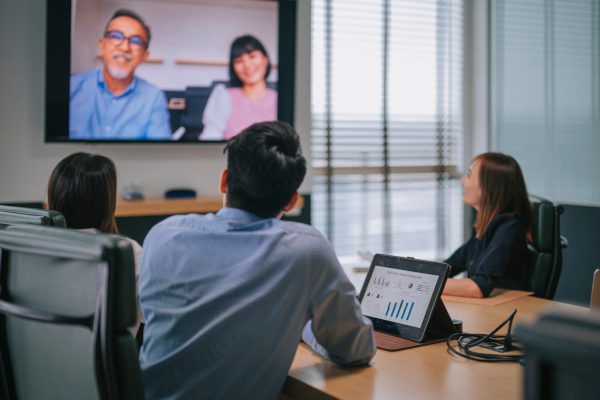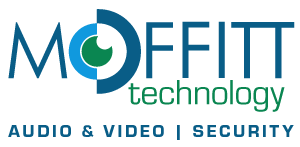 A conference room equipped with the right technology is essential to a productive videoconference meeting. But with the numerous selections of audio and video equipment available, it can be difficult to determine which components are necessary for your specific conference room setup. Take a closer look at what is needed in a conference room to ensure your meetings are conducted under the most optimal sound and video conditions.
A conference room equipped with the right technology is essential to a productive videoconference meeting. But with the numerous selections of audio and video equipment available, it can be difficult to determine which components are necessary for your specific conference room setup. Take a closer look at what is needed in a conference room to ensure your meetings are conducted under the most optimal sound and video conditions.
Audio Equipment
In order to effectively broadcast discussions and presentations, a combination of speakers, microphones, and conferencing phones are used. The quality of the audio equipment used can greatly impact how presenters and audience members interact with one another in the conference venue.
When selecting audio equipment, consideration of the room’s size and design, as well as the format of your meetings, is essential. Participants who are connecting remotely shouldn’t have to contend with echo, background noise, and other sound interruptions. Poor sound quality will cause your audience to lose track of the conversation, resulting in a frustrating conference experience for all participants.
Speakers
Speakers can be installed in-ceiling, placed on the conference table, or used as a sound bar under the video display. Consideration is given to not only the size of the room, but the number of participants. For example, if the meetings involve numerous audience members, a sound bar underneath the video display won’t be sufficient to broadcast the audio clearly for everyone.
Microphones
There are several options available for a conference room microphone system. Using noise-canceling microphones will ensure that speakers are heard without background noises or chatter. The number and type of microphones needed will also largely depend on the conference room size. A gooseneck microphone is a popular choice for speakers who use podiums. However, a disadvantage of this microphone is that it is in a fixed location and the speaker can’t gravitate away from their position. Handheld microphones are ideal for presenters who roam around the room to engage audiences in conversation. Wearable microphones are a good option for a hands-free set-up to use whiteboards or other visual aids in a presentation.
Conference Phones
For meetings that use landline communications, dedicated conference phones are necessary when the meeting includes remote participants who can’t be physically present. Conference members dial a number to call at a predetermined time to connect to the meeting. This makes it an effective way to stay connected with team members who are unable to meet and collaborate face-to-face.
Video Equipment
Today’s businesses are harnessing the power of the internet and wireless technology for their videoconferencing needs. There are many options available for setting up a video conference room, but all have the following components in common:
Monitors
A monitor or TV with a high refresh rate, an indicator of how fast the screen refreshes, and a large enough screen that is appropriate for the venue ensures a good viewing experience. If the conferences require multiple remote participants, an ultrawide screen or multiple monitor approach may be needed to easily view them.
A touch-screen monitor should be considered for displaying graphics, documents, and slide presentations. When connected to a computer, real-time content changes during collaborations can be accomplished.
External or Built-in Webcam
If the monitor or TV doesn’t already include a built-in webcam, an external one can be used. External webcams can also be positioned anywhere in the room, and a presenter can even move freely with one during the conference.
Conference Room Microphone and Speaker System
As is the case with non-video conferencing, videoconference systems require exceptional sound quality to ensure audiences and presenters can effectively communicate with one another. If the video system does not already include a microphone or speakers, or additional audio components are necessary, it’s essential that these are obtained to accommodate the room’s size and acoustics.
WiFi
Since today’s videoconferencing technology relies on wireless signals, a good WiFi connection is required in the room.
Not Sure Where to Start with Your Conference Room Setup? Moffitt Technology Can Help
Conference rooms provide a space for employees to meet and discuss projects, and for clients to come in and see the company’s work. As a result, the selection and installation of the required audiovisual technology is essential for your meetings to run efficiently.
However, if you’re unfamiliar or uncomfortable with the task of setting up your own conference room equipment, consider hiring a professional audiovisual installation company. They will be able to advise you on the best equipment for your needs and budget, as well as handle all the set-up and installation for you.
Our team has years of experience and advanced knowledge in providing conference room audio-video solutions. We can help you choose the perfect equipment for your needs so that your next meeting will be a success. Contact us today for more information about our conference room technology services.
Conference Room Setup FAQs
- What audio equipment is essential for a conference room setup? To ensure optimal sound quality in a conference room, it is essential to have a combination of speakers, microphones, and conference phones. The selection of audio equipment should be based on the room’s size, design, and the format of your meetings.
- What video equipment is needed for a productive video conference meeting? For a productive video conference meeting, you will need a high-quality monitor or TV, an external or built-in webcam, a conference room microphone and speaker system, and a stable WiFi connection. These components are crucial for clear visuals and seamless communication during the meeting.
- How can I improve the audio quality in my conference room setup? To improve audio quality in your conference room setup, consider using noise-canceling microphones, strategically placing speakers for optimal coverage, and investing in a dedicated conference phone for remote participants. These steps can help eliminate background noise and ensure clear communication during meetings.
- Why should I consider hiring a professional audiovisual installation company for my conference room setup? Hiring a professional audiovisual installation company can help ensure that you select the right equipment for your needs and budget, and that it is set up correctly for optimal performance. With their expertise, you can avoid common audiovisual setup issues and have peace of mind that your conference room technology is reliable and efficient.

